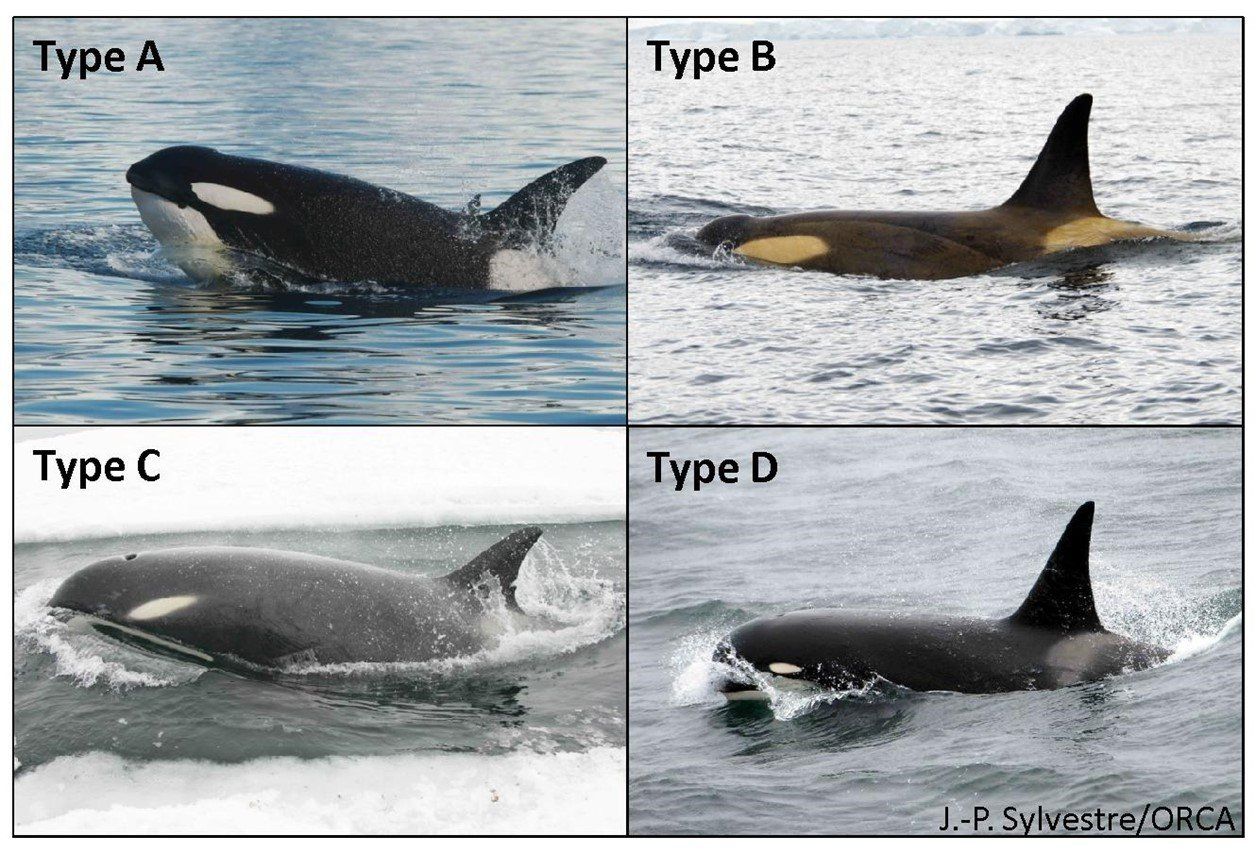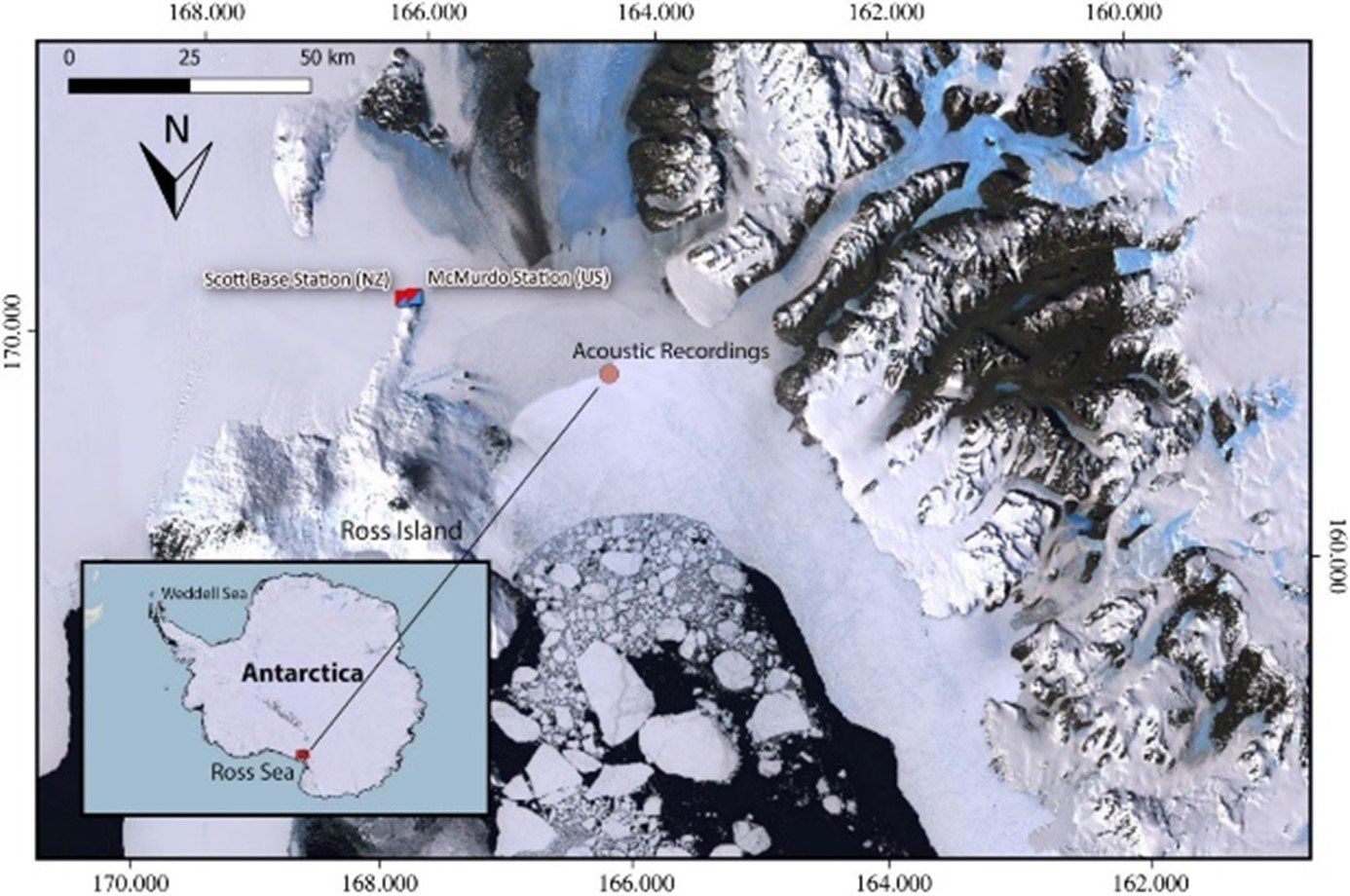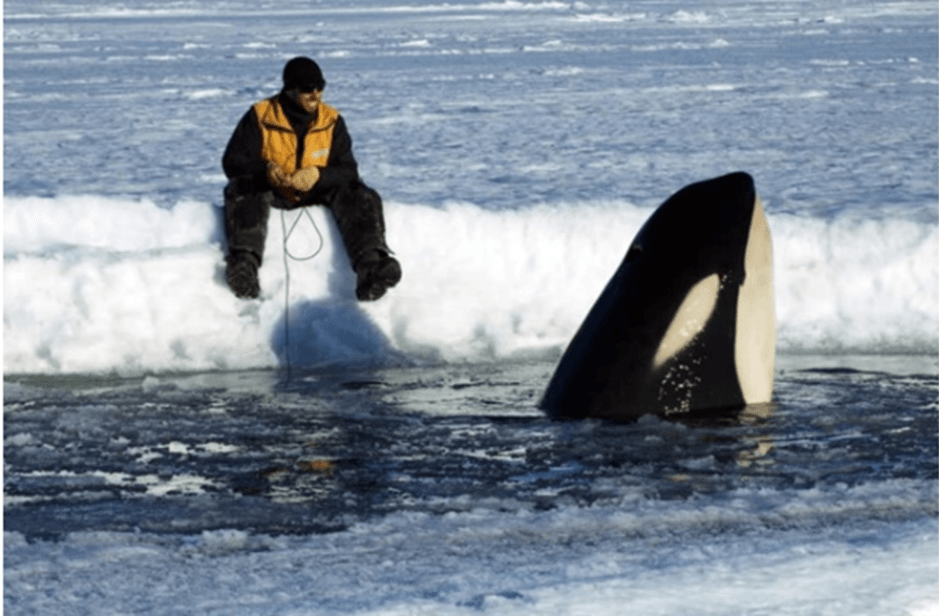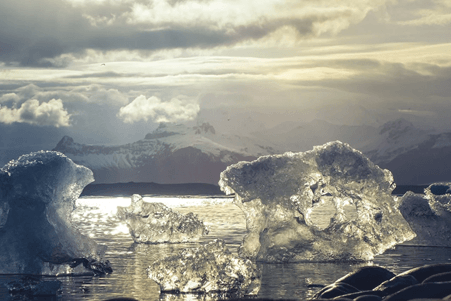Call of the Ross Sea Killer Whale.
Call of the Ross Sea Killer whales
ORCA Sci-Comm Team | 30th October 2020
Passive Acoustic Monitoring (PAM) has emerged as an important tool for effective marine wildlife management and conservation. Yet, discerning where and who generates these acoustic signals remains unclear. The Killer whale (Orcinus orca) population is poorly understood, and despite many genetically distinct populations having been identified remains classified under the IUCN Red list as data deficient under a single species. Here, a recent research paper has unraveled the acoustic repertoire of the smallest known eco-type, the Type C killer whale, also known as the Ross Sea killer whale. The results provide a crucial leap forward in passive acoustic monitoring, allowing it to distinguish its calls from other Killer whale eco-types.
The Killer whale is a marine top predator with a cosmopolitan distribution found in all corners of the ocean, from the Antarctic to the Arctic. The Antarctic residents have been classified under 5genetically anddmorphologicallyy distinct eco-types, known as Type A, B1 (larger), B2 (smaller), C (smallest,) and Type D.
The Type C killer whale is the smallest of all known Killer whale eco-types, reaching lengths of up to 6.1m. It is easily distinguished by its unique narrow and slanted eyepatch, with a diet composed of fish, such as the Antarctic toothfish. In summer, they take advantage of the ice break to forage. They are found in large numbers, at an annual average of 470 individuals in the McMurdo Sound, Ross Sea in Eastern Antarctica. Yet, despite advances in photo-identification and telemetric studies shedding light on its abundance, distribution, ecology and behavior, knowledge gaps remain on their year-round occurrence. The mobile nature of the Killer whale complicates the ability for direct monitoring. Passive acoustic monitoring offers the opportunity for year-round occurrence and relative abundance data.
Killer whales have distinct dialects as well as shared calls, as a result of learned behaviour. Groups that are more closely related have increased shared vocal commonalities than those geographically and relatively distant. A shared commonality amongst all is that their acoustic repertoire is broadly categorized into clicks , whistles, and burst-pulse sounds.
Echolocation clicks are used for foraging and navigation, whilst whistles and burst-pulse sounds are thought to be forms of communication. Additionally, sub-categories exist known as graded types that lie on a spectrum from whistles and burst pulses. Through analysis of burst pulses, clicks, whistles, and graded types, the acoustic repertoire of the Killer whale can be achieved.
During the study period, a total of 9 encounters of the Type C killer whale of 392 individuals ranging in group size from 8 to 125 individuals were recorded. Their behaviour was seen to be a combination of socializing, foraging, and/or traveling.
The acoustic data was captured on site with a hydrophone handheld below water between 3-4 meters depth paired with a recording unit (M-Audia Microtrack 24/96) and an in-line amplifier. Acoustic analysis of over 3 hours of recording was conducted visually and aurally using acoustic software.
The results found a total of 28 acoustic call categories, of which 4 are sub-type categories that are variations of the primary call type produced by the Type C killer whale, a total of 1250 vocalizations. The most popular calls are
McM3 , McM2 , McM1 , McM10 , McM15 , McM7 and McM5 .Multi-components are more frequent than single-component calls, making up 21 out of 28 of the call categories. While the categories are 54% Monophonic and 46% Biphonic, the latter are composed of at least two components: whistle and burst-pulse calls. The high rate of Biphonic calls could be a result of having to locate other members of the group, in particular, to communicate available breathing holes.
The complexity and acoustic repertoire of the Type C killer whale could reflect its feeding ecology and/or behavior at the time of recording. Killer whale eco-types that differ in terms of foraging behavior and diet have different acoustic repertoires and acoustic activity. In particular, mammal-eating killer whale eco-types maintain long periods of silence and have fewer complex calls, only found to regain acoustic activity after predation and during social interactions. In contrast, fish-eating killer whale eco-types display a continuous complex acoustic repertoire throughout activities. This could be a result of prey having more (e.g. whales, dolphins) or less (e.g. fish) acoustic ability, in turn, shaping the Killer whale’s vocal behavior. While its behavioral state may influence call type complexity, higher rates of calls have been recorded during foraging and social interactions compared to traveling. Special consideration in call analysis must be made to their feeding ecology and behavioral context.
Antarctica is one of the last remaining pristine environments but is rapidly changing due to increased environmental and human-induced threats. Its remoteness hinders the monitoring of the ecosystem. Top predators, such as Killer whales are important ecosystem indicators, not only of their own health but of the environment that supports them. This can be crucial to inform decision-making, in particular for the Ross Sea Region Marine Protected Area (RSRMPA), the largest marine high-seas protected area.
This study through PAM and visual surveys was able to quantify and establish the Type C killer whale’s unique and complex acoustic repertoire, providing a step forward in passive acoustic monitoring and understanding its behaviour and ecology. Identification of different Killer whale dialects could help gain knowledge on cultural evolution, phylogenetic relationships, and communication methods, as well as aid not only in their conservation but aid the supporting ecosystem of the Southern Ocean.
© Ocean Research & Conservation Association Ireland (ORCAireland) and www.orcaireland. org , est. 2017. If you like our blogs on the latest news in marine science and would like to support our work, visit www.orcaireland. org to become a member, to volunteer or to make a donation today. This article has been composed based on credible sources.
Reference:
Wellard, R., Pitman,R.L., Durban, J. and Erbe, C. 2020. Cold Call: the acoustic repertoire of RossSea killer whales (Orcinus orca, Type C) in McMurdo Sound, Antarctica. R.Soc.open sci , 7 :191228.
SHARE THIS ARTICLE

















